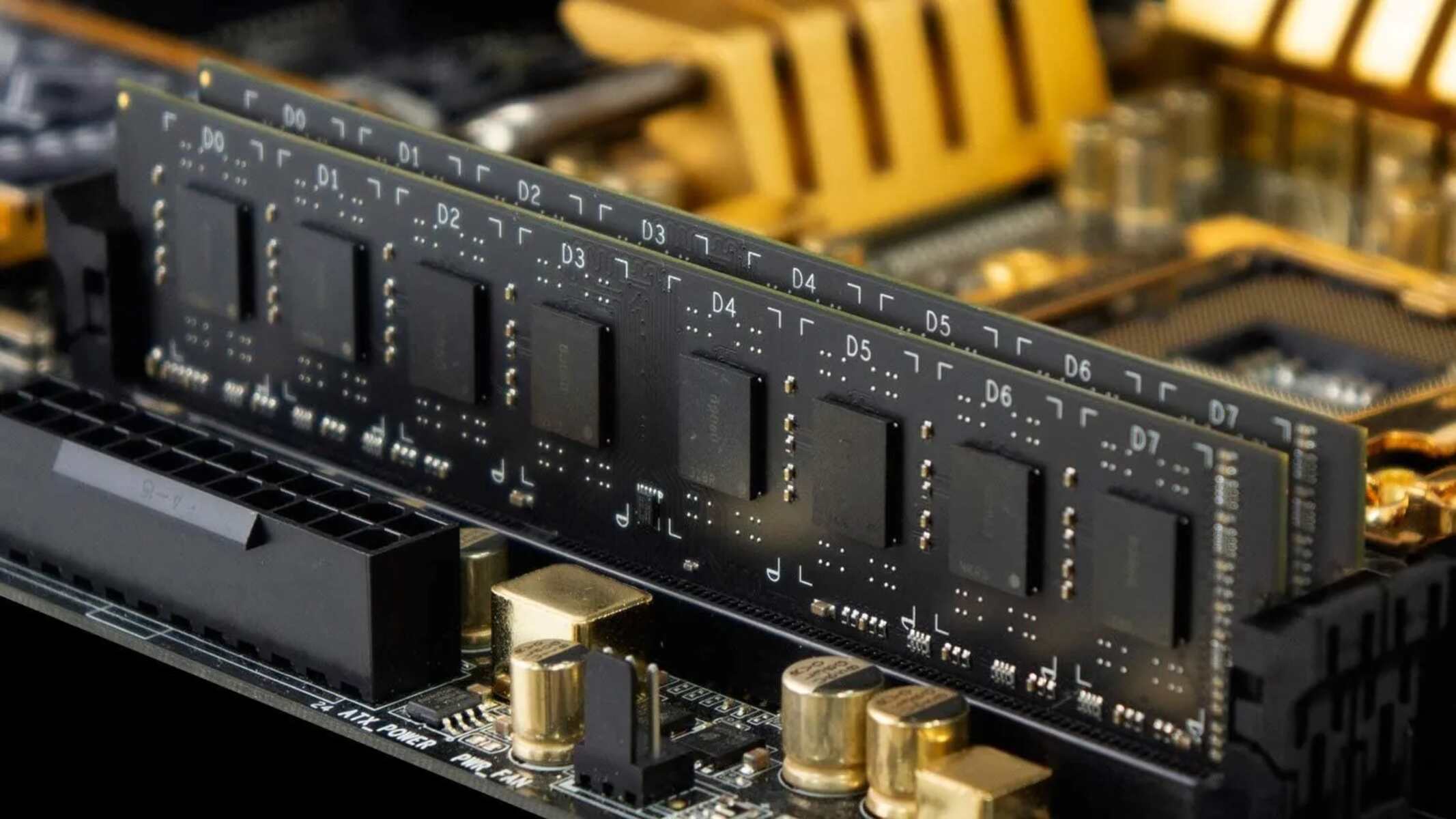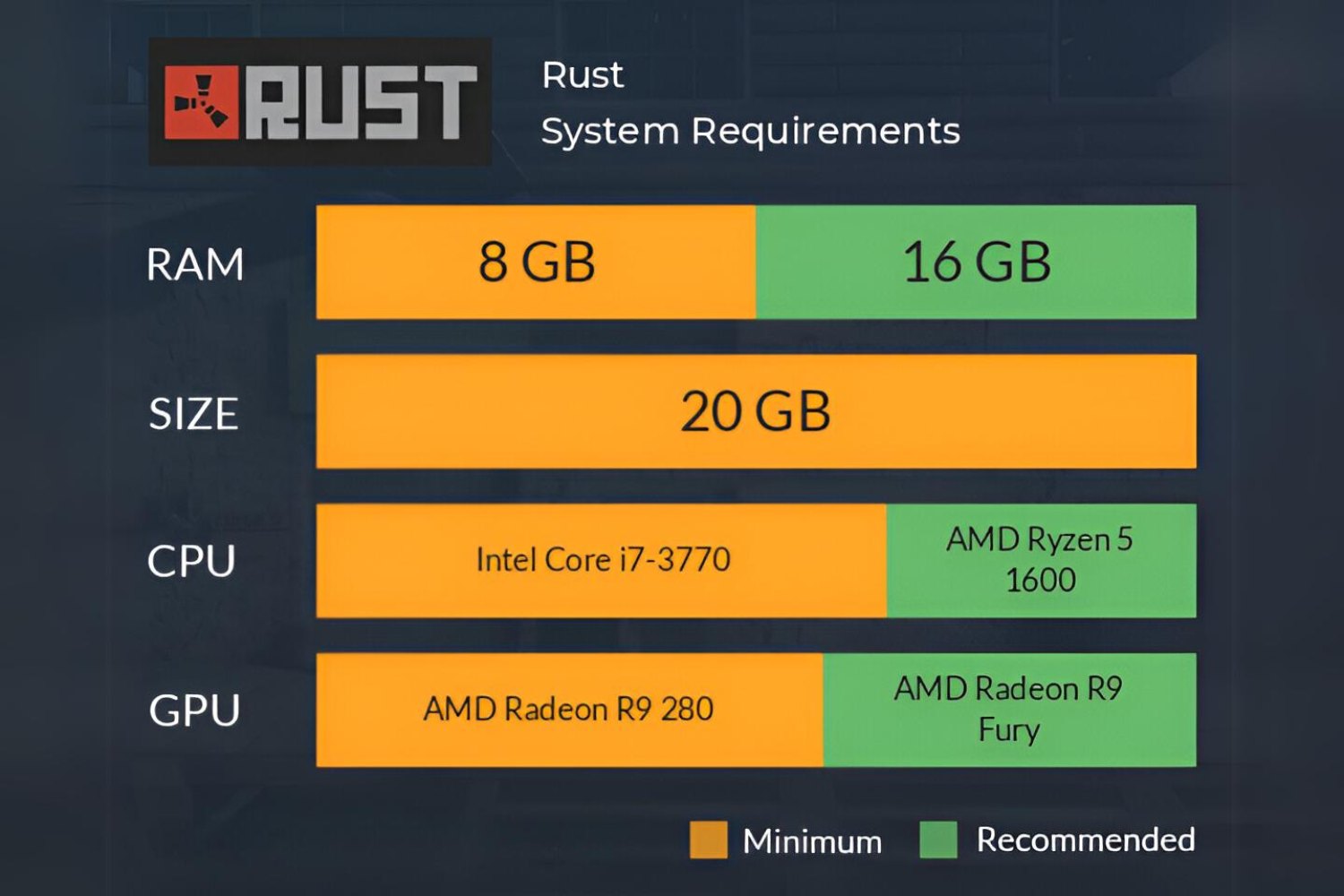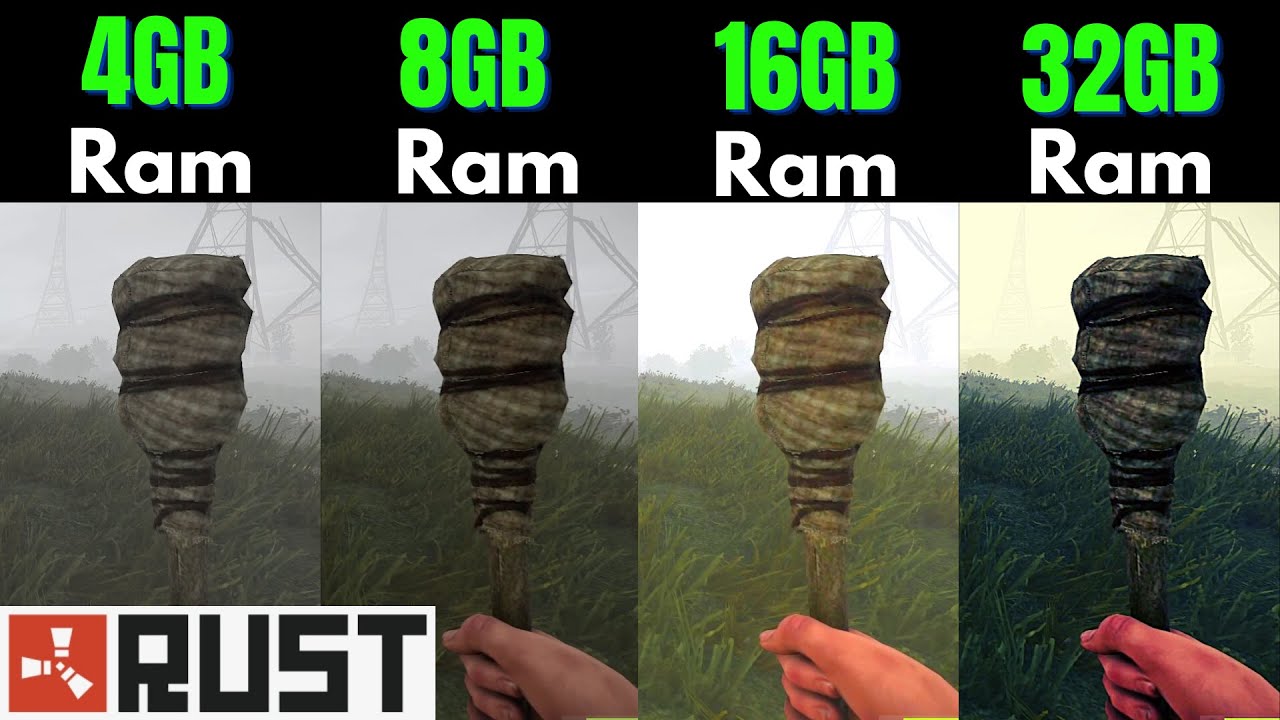Introduction
When working with the programming language Rust, you may come across situations where your program requires more RAM to run efficiently. Allocating additional memory to your Rust program can help improve its performance and stability, especially when dealing with resource-intensive tasks or large datasets.
Rust is known for its strong memory safety guarantees and its ability to manage memory effectively. However, there may be instances where the default allocation of RAM is not sufficient for your specific needs. In such cases, it becomes essential to optimize memory usage and ensure that your Rust program has enough memory available to execute its tasks smoothly.
In this article, we will explore why Rust might need more RAM, how to check the current RAM usage of your Rust program, and steps to give Rust the additional memory it requires. We will also discuss adjusting stack size for concurrency and provide some tips for optimizing memory usage in Rust. By the end of this article, you will have a better understanding of how to allocate more RAM to your Rust program and optimize memory usage to achieve optimal performance.
So let’s dive in and learn how to give Rust the RAM it needs to run efficiently!
Why does Rust need more RAM?
Rust is designed to be a high-performance language that offers memory safety without the overhead of a garbage collector. However, certain scenarios may require more RAM to ensure smooth execution of Rust programs.
One common reason for needing more RAM is when dealing with resource-intensive tasks. For example, if your Rust program is processing large amounts of data, such as parsing and manipulating large files or working with complex data structures, it may require additional memory to efficiently store and process the data.
Another factor that can contribute to the need for more RAM is the concurrent nature of Rust programs. When working with multiple threads or asynchronous tasks, each thread or task may require its own stack space. If the default stack size allocated by Rust is not sufficient, you might encounter stack overflow errors or performance issues. Increasing the available RAM can help alleviate these problems.
Furthermore, Rust’s ownership and borrowing system, which ensures memory safety, can sometimes lead to increased memory usage. The system enforces strict rules on ownership and borrowing, which may result in the creation of temporary copies or additional memory allocations. In situations where memory efficiency is critical, it might be necessary to allocate more RAM to compensate for these additional memory requirements.
It is important to note that the need for more RAM in Rust is not a reflection of any inefficiency in the language itself. Rather, it is a result of the specific requirements and demands of your program. By understanding the reasons why Rust might need more RAM, you can take the necessary steps to optimize memory usage and provide the additional memory required for your program to run smoothly.
How to check the current RAM usage of your Rust program
Before allocating more RAM to your Rust program, it’s important to determine how much memory it is currently using. This will help you identify if your program is indeed in need of additional memory and allow you to monitor memory usage during development and testing phases.
Fortunately, there are several tools and techniques available to check the current RAM usage of your Rust program:
- Profiling Tools: Profiling tools like
perf,valgrind, orheaptrackcan give you detailed insights into the memory usage of your program. These tools can help you identify memory leaks, excessive allocations, and other performance bottlenecks. - Operating System Monitoring: Most operating systems provide built-in tools to monitor the memory usage of running processes. On Linux, you can use commands like
toporhtopto view the memory consumption of your Rust program. On Windows, the Task Manager can be used for the same purpose. - Rust Memory Profilers: There are specialized memory profiling tools available for Rust, such as
cargo-heapsizeorheapy, which can help you understand how memory is used by your Rust program on a per-type basis. These tools can provide valuable insights into memory allocations and deallocations.
By utilizing these tools, you can gain a better understanding of how your Rust program is utilizing memory and identify any areas where memory usage can be optimized. This information will be valuable when trying to allocate more RAM or optimize memory usage in your Rust program.
Keep in mind that tracking memory usage in a Rust program is an ongoing process. It’s recommended to periodically monitor and analyze memory consumption as you develop and modify your code to ensure optimal memory utilization.
Steps to give Rust more RAM
Once you have determined that your Rust program requires more RAM, you can take the following steps to allocate additional memory:
- Optimize Data Structures: Evaluate the data structures used in your Rust program and determine if there are any opportunities to optimize their memory usage. For example, consider using more memory-efficient data structures, such as HashMaps instead of Vecs, or resizing arrays dynamically to avoid unnecessary memory allocations.
- Increase System RAM: If your system has more available memory, consider increasing the amount of RAM assigned to it. This will indirectly provide more memory for your Rust program to utilize.
- Use Environment Variables: Set environment variables to adjust the memory allocation for your Rust program. For example, you can use the
RUST_MIN_STACKenvironment variable to increase the stack size or theRUST_MAX_THREADSvariable to control the number of threads and their associated stack sizes. - Allocate More Heap Memory: You can allocate more heap memory for your Rust program by utilizing the
std::alloc::Systemallocator. This can be done by setting theRUSTFLAGSenvironment variable with the"-C heap-size=flag, where" <your_heap_size>is the desired amount of memory in bytes. - Manually Manage Memory: In some cases, you may need to manually manage memory in your Rust program using functions like
Box::new_uninitorBox::leak. This approach requires careful handling of memory allocation and deallocation to avoid memory leaks or other memory-related issues.
It’s important to note that while increasing the allocated memory can improve the performance of your Rust program, it should be done judiciously. Allocating excessive amounts of memory can lead to unnecessary resource utilization and potentially impact the performance of other processes running on your system.
By following these steps, you can effectively give Rust more RAM and ensure that your program has sufficient memory to execute its tasks efficiently.
Adjusting stack size for concurrency
Concurrency is a core feature of Rust, and when working with multiple threads or asynchronous tasks, it’s essential to ensure that the stack size allocated for each thread is appropriate. By default, Rust assigns a relatively small stack size to threads to prevent excessive memory consumption. However, in some cases, adjusting the stack size can be beneficial.
To adjust the stack size for concurrency in Rust, you can utilize the thread::Builder API provided by the standard library. This API allows you to create threads with custom stack sizes suited to your program’s requirements. Here’s an example:
rust
use std::thread;
fn main() {
let stack_size = 2 * 1024 * 1024; // Set stack size to 2MB
let builder = thread::Builder::new().stack_size(stack_size);
let handle = builder.spawn(|| {
// Thread code
}).unwrap();
handle.join().unwrap();
}
In this example, we create a new thread using the `thread::Builder` API and set the desired stack size using the `stack_size()` method. The stack size is specified in bytes.
It’s important to note that adjusting the stack size for concurrency should be done cautiously. Allocating too much memory for each thread can lead to excessive memory consumption, while allocating too little can result in stack overflow errors. It’s crucial to strike a balance depending on the requirements of your program.
Additionally, you can also adjust the stack size for recursive functions or functions that have high-depth call chains. The `#![recursion_limit]` attribute can be used to increase the limit on the amount of stack space available for recursive function calls in Rust. By default, this limit is set to 128, but you can increase it to accommodate your program’s needs:
rust
#![recursion_limit = “256”]
By adjusting the stack size for concurrency and recursive functions, you can ensure that your Rust program has sufficient memory allocation to handle multiple concurrent operations effectively and prevent stack overflow errors.
Tips for optimizing memory usage in Rust
Optimizing memory usage is crucial for ensuring efficient performance and resource utilization in your Rust programs. Here are some tips to help you optimize memory usage:
- Use Appropriate Data Structures: Choose the most suitable data structures for your program’s needs. Consider the trade-offs between memory usage and performance for various data structures. Use arrays instead of vectors when the size is known in advance, and use hash maps instead of trees when quick lookups are required.
- Avoid Unnecessary Cloning: The ownership and borrowing system in Rust allows efficient management of memory. Avoid unnecessary cloning and prefer borrowing whenever possible. Use references or slices to refer to data instead of making unnecessary copies.
- Release Unused Memory: Manually release memory that is no longer needed to free up resources. Make use of functions like
mem::forgetorBox::leakto prevent unnecessary deallocations. - Reuse Memory: Instead of creating new objects and allocating memory, try reusing existing objects when appropriate. Use object pooling or recycling techniques to reduce the number of memory allocations and deallocations.
- Profile Memory Usage: Utilize profiling tools and memory profilers to identify areas of your code that have high memory usage. This data can help you pinpoint areas that can be optimized or optimized data structures that can be used.
- Avoid String Concatenation: String concatenation can lead to unnecessary memory allocations and reallocations. Instead, consider using
format_args!orwrite!macros to write formatted strings directly to a buffer. - Limit the Use of Large Structures: Large structures, such as multidimensional arrays, can consume significant amounts of memory. Carefully evaluate if there are alternative ways to represent or process the data to reduce memory consumption.
- Consider Streaming and Chunking: If you’re dealing with large streams of data, consider processing them in smaller, manageable chunks. This approach allows you to process data incrementally and avoids loading all the data into memory at once.
By employing these tips, you can significantly optimize memory usage in your Rust programs and achieve improved performance and resource efficiency.
Conclusion
Allocating more RAM to your Rust program can be crucial for improving its performance and ensuring smooth execution, especially when dealing with resource-intensive tasks or concurrent operations. By understanding why Rust might need more RAM and following the steps discussed in this article, you can allocate additional memory effectively.
Checking the current RAM usage of your Rust program using profiling tools, operating system monitoring, or specialized Rust memory profilers allows you to assess its memory requirements and identify areas for optimization.
Adjusting the stack size for concurrency and managing memory usage in Rust are critical aspects of optimizing memory. By utilizing the `thread::Builder` API and considering the recursion limit, you can tailor the stack size to meet your program’s needs.
Additionally, incorporating tips for optimizing memory usage, such as employing appropriate data structures, avoiding unnecessary cloning, and reusing memory, can significantly enhance the efficiency of your Rust program.
Remember, optimizing memory usage is an ongoing process. Regular tracking, profiling, and analyzing memory consumption in your Rust program will help you identify potential areas for improvement and ensure efficient utilization of resources.
By implementing these techniques and optimizing memory usage, you can harness the full potential of Rust, create high-performance applications, and deliver exceptional user experiences.

























